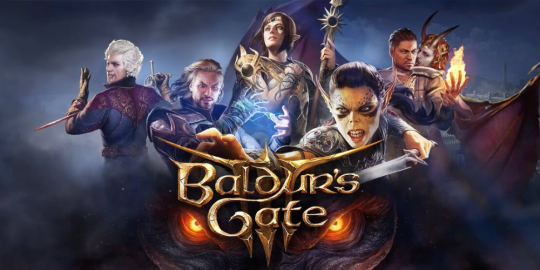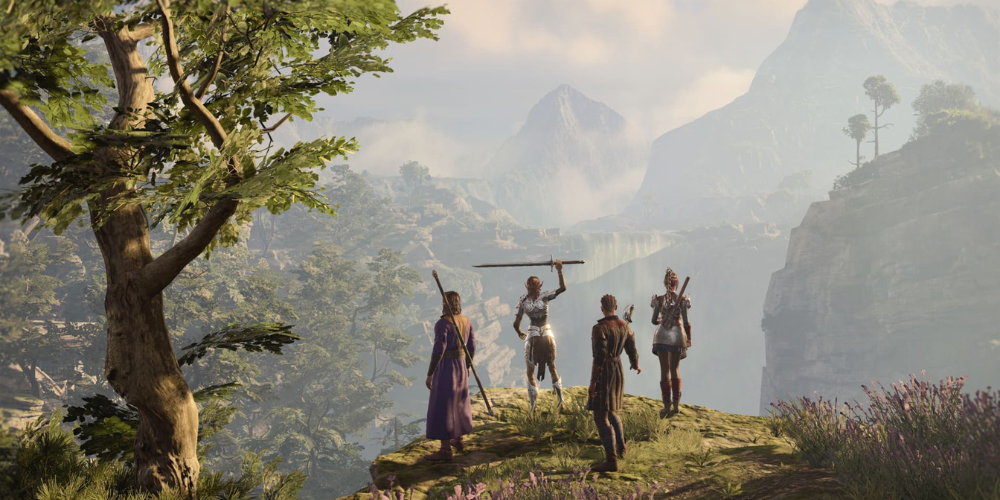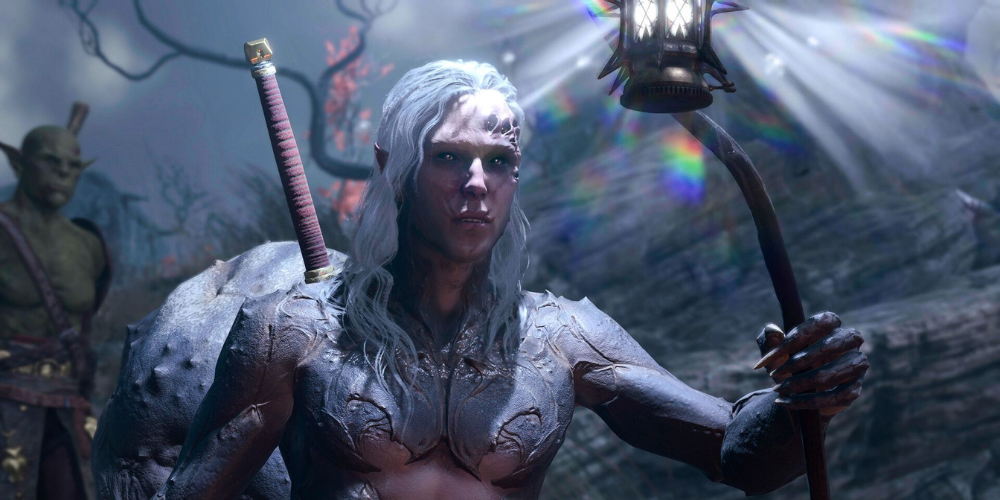
In the pantheon of role-playing games, few titles have been as eagerly awaited as Baldur's Gate III. Developed by Larian Studios, this game is not merely a continuation of a cherished series; it represents a significant leap forward in RPG mechanics and storytelling. With its roots deeply entrenched in the Dungeons & Dragons 5th edition rule set, Baldur's Gate III offers a blend of magic and mechanics that has the potential to redefine the genre and reaffirm the importance of strategic gameplay in modern role-playing narratives.
The Convergence of Lore and Mechanics

Baldur's Gate III stands as a beacon of innovation in the RPG landscape, merging the rich lore of the Forgotten Realms with the strategic depth of Dungeons & Dragons. This union creates an immersive experience that challenges players to think critically and make decisions with lasting consequences. The game's mechanics are designed to encourage players to engage with the world in a way that feels authentic to the D&D experience, with each dice roll and character choice echoing the unpredictability and complexity of a tabletop session. The strategic layer extends beyond combat, influencing dialogue and exploration, ensuring that players remain tactically engaged throughout their journey.
This fusion of lore and mechanics also serves to deepen the game's narrative. Baldur's Gate III is not content to merely tell a story; it invites players to live it. As adventurers traverse the Sword Coast, they encounter a tapestry of interwoven tales that challenge their morals, wit, and resolve. The game's emphasis on choice means that every action, from the forging of alliances to the selection of a combat maneuver, becomes a thread in the greater narrative, allowing players to craft a tale that is uniquely their own.
The Art of Strategic Combat
Combat in Baldur's Gate III is a chess match where every move is critical, and every piece plays a vital role. The turn-based system demands that players approach each skirmish with forethought and precision. Understanding the strengths and weaknesses of both allies and adversaries is crucial, as positioning, environmental factors, and the use of spells and abilities can turn the tide of battle. This level of strategic engagement ensures that no two encounters are alike, providing a fresh challenge each time swords are drawn or spells are cast.
The complexity of the combat system also serves as an educational tool, teaching players to think several steps ahead. Success in Baldur's Gate III requires a combination of foresight, adaptability, and tactical acumen. Players learn to anticipate enemy movements, set traps, and exploit terrain to their advantage. As they progress, they also unlock new abilities and spells that add layers to the strategic gameplay, allowing for even more nuanced and intricate battles that test the limits of their problem-solving skills.
Character Creation and Customization

Character creation in Baldur's Gate III is an exercise in identity and strategy. Players are given a plethora of options to shape their avatar, from race and class to background and skills. Each decision influences not only the character's abilities and role in combat but also their interactions with the world and its inhabitants. The game's commitment to customization extends to the creation of an alter ego that is not just a tool for exploration but an extension of the players themselves, with a backstory and personality that resonate throughout the game.
The depth of customization also impacts the game's replayability. With a multitude of race, class, and background combinations at their disposal, players can return to the game time and again, each time experiencing a different aspect of the game's world and story. This level of personalization ensures that each playthrough feels fresh and engaging, offering new challenges and insights into the rich tapestry of Baldur's Gate III's narrative and mechanics.
The Future of Role-Playing Games
Baldur's Gate III is more than just a game; it is a harbinger of the future of role-playing games. Larian Studios has crafted an experience that respects the traditions of its tabletop roots while pushing the boundaries of digital storytelling. The game's influence is likely to ripple through the RPG community, inspiring developers and players alike to think differently about how stories are told and games are played.
As the game evolves from early access to full release, it continues to shape the expectations of gamers and developers. The level of detail and the commitment to player agency present in Baldur's Gate III are benchmarks for future titles. The game's impact on the genre is undeniable, prompting a shift towards more thoughtful, strategic gameplay that rewards player investment with a truly personalized experience. The RPG landscape is changing, and Baldur's Gate III is at the forefront, leading the charge toward a new era of immersive, strategic storytelling.
Conclusion

Baldur's Gate III is not just a milestone for Larian Studios; it is a transformative moment for the entire role-playing genre. Through the depth of its character customization, the complexity of its combat, and the richness of its world, Baldur's Gate III stands as a testament to the potential of RPGs to engage the mind and stir the imagination. As the game continues to evolve and influence the genre, one thing is certain: the realms of role-playing will never be the same.
FAQ:
What makes Baldur's Gate III different from other RPGs?
Baldur's Gate III sets itself apart through its deep integration of Dungeons & Dragons 5th edition rules, offering a true tabletop experience in a digital format. It combines a rich narrative with intricate turn-based combat and an unparalleled level of character customization. Additionally, the game emphasizes player choice, with each decision impacting the story's trajectory and gameplay.
Can you play Baldur's Gate III with friends?
Yes, Baldur's Gate III supports cooperative multiplayer gameplay, allowing friends to join together in the adventure. The game is designed to facilitate collaborative strategy and decision-making, adding a rich layer of social interaction to the experience.
Is Baldur's Gate III accessible to newcomers to the genre?
While Baldur's Gate III is complex and rooted in the detailed mechanics of D&D, it offers various accessibility options and difficulty levels to cater to a wide range of players, including those new to the genre. The game provides a tutorial system and guides to help newcomers acclimate to the gameplay and mechanics.
How important are character backgrounds in Baldur's Gate III?
Character backgrounds play a significant role in Baldur's Gate III, influencing a character's initial skill set, proficiencies, and place in the story. Each background comes with unique traits that can affect dialogue options and relationships within the game, enhancing the immersion and personalization of the experience.
Will there be downloadable content (DLC) for Baldur's Gate III?
While Larian Studios has expressed interest in developing additional content for Baldur's Gate III, official announcements regarding DLC and expansions have not been made. The game's design suggests a commitment to expanding the world and story so players can look forward to potential future content.
Is character customization purely cosmetic, or does it affect gameplay?
Character customization in Baldur's Gate III goes beyond cosmetics, significantly affecting gameplay. Choices in race, class, and background not only alter a character's appearance but also their abilities, interactions with the game world, and role in combat. This level of customization allows players to tailor their gameplay experience to match their preferred style.